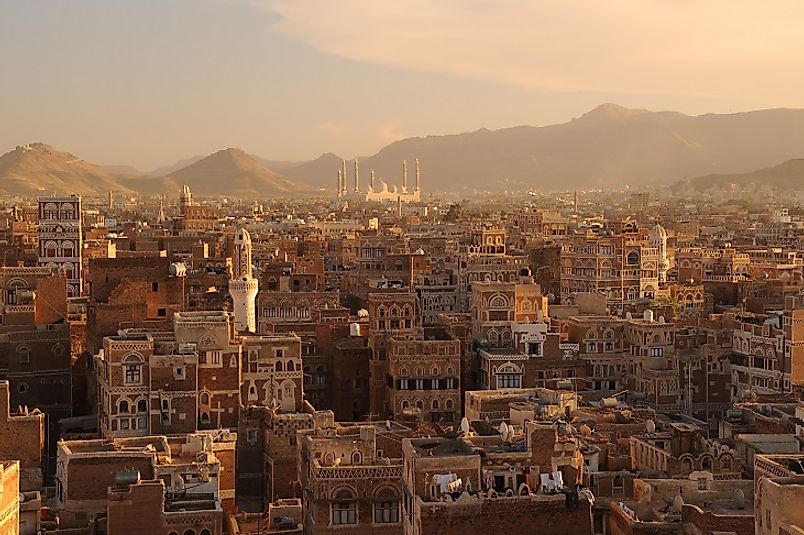The Biggest Cities In Yemen

Yemen is located in the southern region of the Arabian Peninsula. It has an area of 203,850 square miles and is bordered by Saudi Arabia to the north and Oman to the north and northeast. Its 1,200-mile coastline runs along the Red Sea, the Arabian Sea, and the Gulf of Aden. The population of Yemen is approximately 25.4 million. Many people live in the country’s urban areas. This article takes a look at some of the most populated cities in Yemen.
Most Populated Cities
Sana'a
The most heavily populated city in the country is Sana’a, which is also the capital, located in the Yemeni inland. Approximately 2,167,961 live here in one of the world’s oldest continuously inhabited cities. Research indicates over 2,500 years of human settlement. The population began to grow rapidly in the 1960’s when many rural residents came searching for employment opportunities. Today, growth continues rapidly and is 7% for the city. The public sector makes up 40% of the employment sector, another 32% are employed in the informal sector. Trade and industry provide other formal jobs. The section of Sana’a referred to as the Old City was made a UNESCO World Heritage Site in order to protect some of its ancient architecture. One of oldest is the Great Mosque of Sana’a at over 1,400 years old.
Aden
Aden is next on the list with a population of 760,923. This city is located in the crater of a dormant volcano on the coast of Red Sea. The area forms a peninsula that is connected to the mainland by an isthmus, a thin strip of land. This location makes it an important port city for the country. The city has a long history dating back to pre-Islamic civilizations and was once under the control of the Ottoman Empire, the Portuguese, and the British Empire. The economy has been supported by the production of salt, coffee, wheat, barley, charcoal, and tobacco.
Taiz
The third most populated city is Taiz, which has a population of 615,222. This city is located in the Yemeni Highlands at an elevation of nearly 4,600 feet above sea level. The humid subtropical climate here helps produce coffee, one of the most important exports for the city. Other important agricultural products include pomegranate, onion, and mango. The people living here have endured political unrest and violence over the last few years in incidences such as the Yemeni Revolution of 2011 and the Yemeni Civil War of 2015.
Overcrowding
As economic opportunities become less available in rural areas, people will continue migrating into these major urban centers. However, ancient cities, such as those previously mentioned, are not prepared to receive large numbers of residents and do not have urban planning policies in place to deal with the rapid growth. One of the biggest problems currently affecting the cities of Yemen is a water shortage. Many of these rapidly growing urban areas are not located along the coast, but rather in the mountains where water was already scarce. Now, there is more demand and not enough supply to meet that demand. Additionally, the cities experience high poverty rates, large gaps in income, and housing shortages. These conditions leave many new arrivals in poor, unsanitary living conditions where they are in sub-par structures that lack running water and sewage connections. The situation does not appear to be improving either as urban economies are not developing as fast as the population is growing.
The Biggest Cities In Yemen
| Rank | Biggest Cities in Yemen | Population |
|---|---|---|
| 1 | Sana'a | 2,167,961 |
| 2 | Aden | 760,923 |
| 3 | Taiz | 615,222 |
| 4 | Al Hudaydah | 474,217 |
| 5 | Al Mukalla | 337,671 |
| 6 | Ibb | 192,806 |
| 7 | Dhamar | 160,114 |
| 8 | Sahar | 133,060 |
| 9 | Sayyan | 69,993 |
| 10 | Ash Shihr | 68,313 |







